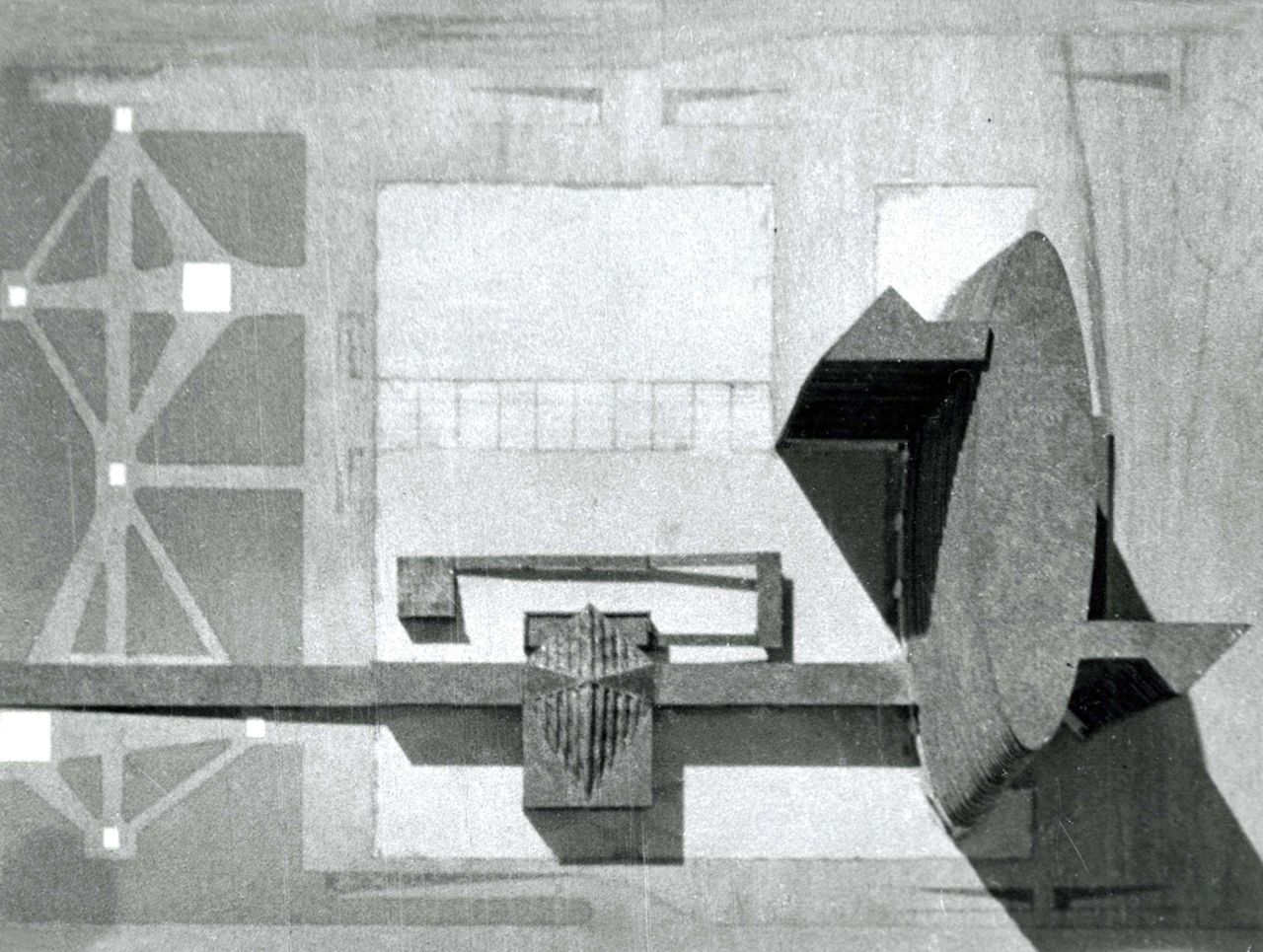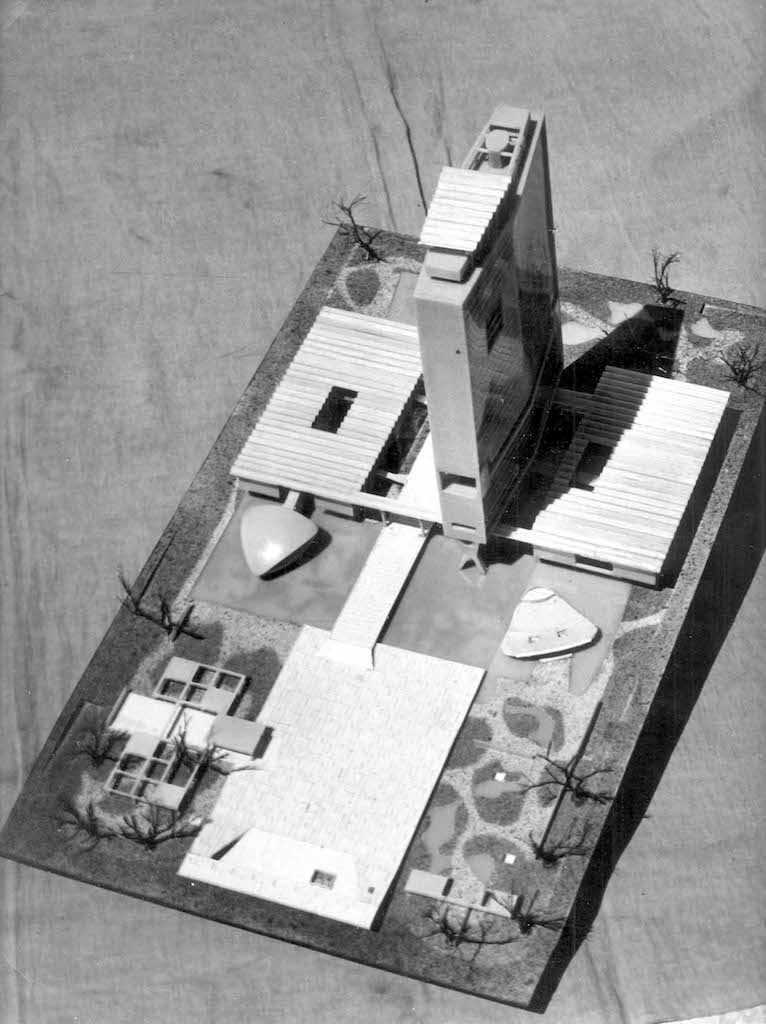18/01 - Three Presentations on Internationalism and South Asian Architecture, 1957-1967: Aζ and University School of Architecture and Planning, GGSIPU
In how many ways Architecture of Modernism is received in post-independence South Asia still remains to be explored, as we can evidence from the various themes that commonly circulate in contemporary discourse. In this context, the three lectures will reveal more instances of architects perusing conscious, iconic propagation of architecture across national and political boundaries. Time and again, the idealism of post-independence ‘emancipation’ would be displaced as a mythical or utopian notion, subjugated to a play of symbolisms. For some, ‘modernization’ in the context of South Asian architecture is force-evidenced not only by import but even by, reverse export of iconized incarnations of the Ideal; while for others, modernization itself very often issues the license for explicit iconic representation in projection of particular identities.

Presentations
Three forty minutes presentations with focussed questions and interventions.
George Kapelos
Shaping Canadian Modernity: Toronto’s 1958 Competition for a New City Hall and Square: The lecture discusses the 1958 Toronto competition for a new City Hall and Public Square. It is fully illustrated and includes vintage video clips from a 1958 television broadcast on the Canadian Broadcasting Corporation. The components of the lecture are as follows: (a) Introduction, (b) The Competition: context, (c) The Competition: entrants (including the seven documented entries from India), (d) The competition: international impact, followed by questions for the participants in three discussion areas, (e) concerning the Indian participants, (f) the design of Civic Centres and Public Space in India and how they compare with the Toronto Competitions entries and finalists, and (g) the range of influences and positions on the design of the city demonstrated by Indian competitors.
George Thomas Kapelos is an architect and planner, and teaches architecture and planning at Ryerson University. He is a tenured faculty member at the rank of associate professor in the Department of Architectural Science. Since 2005 he has been a Visiting Professor at the Daniels Faculty of Architecture at the University of Toronto. A native of London Ontario, he received a Bachelor of Arts from Princeton University (magna cum laude), a Master of City Planning from the Harvard Graduate School of Design, and a Master of Architecture from Yale, where he was a CMHC scholar.
Peter Scriver
‘Inter-nationalism’ in the Architectural designing of Expo’67, and the prospect of the ‘post-national’: The architecture of “Man and his World”, Montreal’s Universal Exposition of 1967, was notable on multiple counts. Not least of these was the opportunity it gave to young and relatively untested designers to explore new ideas, some of which would extend beyond the built-environment to challenge core assumptions about the spatial and political framework of modern society itself. Especially striking, however, on the very cusp of the critical turn away from the modernist certainties of the post-war era, was the renewed vision and innovation that the architecture of Expo’67 invested in the ideal of ‘internationalism’. Focusing in particular on the transnational agency of the young franco-Canadian architect, Luc Durand, the talk will consider some of the existential quandaries of how this ideal was embodied in the pavilion designs of several different ‘nations’, including those of Quebec and India, that arose from very different contexts of postcolonial consciousness and becoming but with unexpectedly inter-connected design histories.
Peter Scriver has played a leading role in the teaching of Architectural History, Theory and Architectural Design, and the development of postgraduate research across the Built Environment disciplines at the University of Adelaide since 1996. A founding member of the Centre for Asian and Middle-Eastern Architecture (CAMEA), established at Adelaide U. in 1997, his research engages cultural and cognitive approaches to the study of architecture and the broader built environment, with a particular focus on colonial architectures and urbanism, and the professional networks and institutional frameworks in which the design disciplines operate.
Anand Bhatt
The Nehruvian Idol: This talk will discuss some questions concerning archivable material and their interpretation that arise at Architexturez Imprints. The talk is in two parts, the first part will consist of: (a) an overview of the content acquisition strategies by Architexturez, (b) the levels at which content is aggregated, and (c) the divergence between material collected at various levels. The second part will use a familiar speech by Jawaharlal Nehru and pose questions in three discussion areas, (d) the characterization of dominant discourses on Indian Architecture since 1947, (e) the sufficiency of this characterization, and (f) the significance of the ideas presented by Scriver and Kapelos in this context.
Anand Bhatt is an architect at New Delhi.
Rajat Ray
Concluding remarks and summary.
Rajat Ray joined USAP in December, 2011. He did B. Arch. (1982) from Calcutta University, M. Urban Design (1984) from SPA Delhi, PG Dip Conservation (1988) from Florence and MA in Conservation (1992) from York. He has taught at B.Arch. and M.Arch. levels for almost 20 years since late 80s. He has worked as Professor of Architecture at and as the ex-officio Dean of the Sushant School of Art and Architecture, Gurgaon. He is a member of the visiting faculty in SPA, Delhi and Institute of Archaelogy of the ASI and has been member of their Board of studies.
Interventions
Focused questions and interventions by Vibhuti Sachdev, Akshat Bhatt, Riyaz Tayyibiji and Sanjay Kanvinde on the formation of discourse on Indian Architecture since ’84, Radha Dayal, Ram Rahman, Kshitij Rana and Sambuddha Sen on tendencies in Architectural Practice and Education in South Asia.
Location
INTACH
71, KK Birla Ln,
Lodhi Estate, New Delhi.
11:30 — 15-:30 Hours
13th January, 2018

Footnotes
- Text by Rajat Ray, Dean, University School of Architecture and Planning, GGSIPU, New Delhi.
- The lecture material is drawn from material presented in the book, Competing Modernisms, Toronto’s 1958 Competition for a New City Hall and Square (Dalhousie Architectural Press, 2015)
- Nehru, Jawaharlal. “Inaugural Address by Shri Jawaharlal Nehru, Prime Minister.” In Seminar On Architecture, edited by Achyut P. Kanvinde, 5-9. New Delhi: Lalit Kala Akademi, 1959. https://architexturez.net/doc/az-cf-168488

